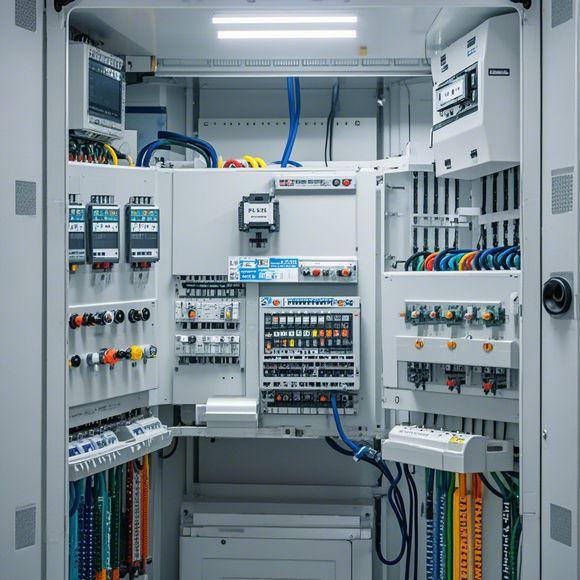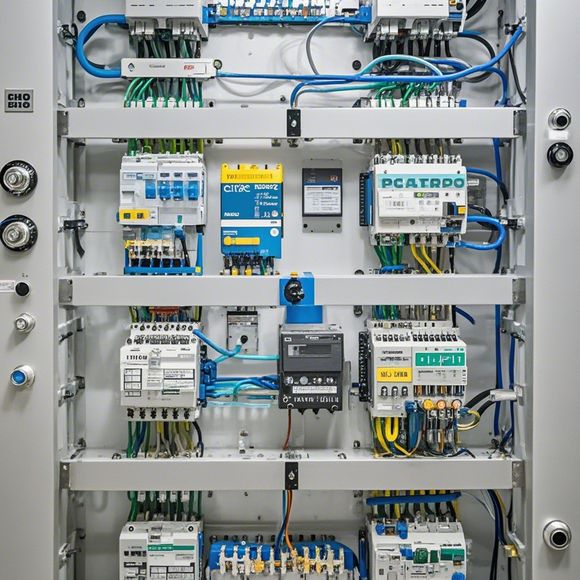PLC Controller: What it Does and How to Use It for Better Business
PLC Controllers are devices that can help improve the efficiency of businesses. These controllers allow for precise control over various processes, making it easier to manage and automate tasks. By using PLC controllers, businesses can save time and money by reducing errors and ensuring accurate results. Additionally, they can enhance the overall quality of the products or services being produced, leading to better customer satisfaction. To make the most of PLC controllers for better business, businesses should invest in the latest models and consider hiring professionals who are knowledgeable in their use. With careful planning and implementation, PLC controllers can be a valuable tool for any business looking to improve efficiency and profitability.
Introduction to PLC Controllers:
A Programmable Logic Controller, or PLC, is a powerful tool that has revolutionized the way industries operate. Its primary purpose is to manage and control industrial processes with precision and efficiency, making them more reliable, cost-effective, and sustainable for both businesses and consumers. In this guide, we'll explore the key functions of a PLC controller and provide practical tips on how to use it effectively for your specific needs.
What is a PLC Controller?
A PLC controller is a digital electronic device that can be programmed to carry out a variety of tasks in various industries, including manufacturing, healthcare, transportation, and more. It works by processing information from sensors and input devices, such as buttons or switches, and generating output signals based on preset rules or instructions stored in its memory. These commands then actuate physical components, like motors or valves, to perform the desired function.

The main features of a PLC controller include:
1、Programmability: PLCs are programmable, allowing you to write customized software to control their operations. This flexibility enables you to adapt the controller to meet changing demands and optimize production processes.
2、High-Speed Processing: PLCs are highly efficient at processing data, which means they can quickly respond to changes and make decisions based on real-time inputs.
3、Robustness: PLCs are designed to withstand harsh environments, making them ideal for applications requiring high reliability and durability.
4、Modular Design: PLCs are often built with modular units that allow easy integration of different functions into the system, enhancing flexibility and scalability.
5、Safety Features: Many PLCs come with safety features such as overload protection, fault detection, and emergency stop capabilities, ensuring that the equipment runs safely and securely.
How to Use a PLC Controller for Your Business:
Now that you understand what a PLC controller is, let's dive into some practical tips on how to use it effectively for your business.
1、Identify Needs: Before investing in a PLC controller, carefully assess the processes and workflows in your industry that require automation. Identify areas where PLCs can save time, reduce errors, and improve overall efficiency.

2、Choose the Right Type: Depending on the complexity and volume of your processes, choose the appropriate type of PLC controller, such as a Basic Routine Programming (BRP) controller, a High-Level Language Programming (HLL) controller, or an Integrated Development Environment (IDE) controller. Each type offers different features and programming languages, so choose based on your specific requirements.
3、Train Staff: Proper training is essential for using a PLC controller effectively. Ensure that your staff is familiar with the basic concepts and functionalities of the device, and provide regular training sessions to keep them up-to-date with the latest developments and improvements.
4、Connect the Sensors and Input Devices: To get the most out of a PLC controller, ensure that the sensors and input devices connected to it are accurate and responsive. Test the connections thoroughly before starting the automation process.
5、Write the Code: Once everything is set up, it's time to write the software code that will control the PLC. Use a suitable programming language and create the logic needed to perform the desired actions based on real-time inputs. Remember to test the code thoroughly and make any necessary adjustments before implementing it in production.
6、Test and Optimize: Run simulations or test scenarios to ensure that the PLC controller is working correctly and that it meets all the requirements set by your industry standards. Use data analysis and performance monitoring tools to identify areas for improvement and make adjustments accordingly.
7、Maintenance and Support: Finally, don't forget about maintenance and support. Keep the PLC controller clean and well-maintained to prevent breakdowns and ensure optimal performance. If you encounter any issues or have questions about the device, seek help from technical experts or manufacturers' support teams promptly.
In conclusion, a PLC controller is a valuable tool for businesses looking to automate their processes and streamline operations. By understanding its key features and capabilities, selecting the right type of PLC controller, training your staff, connecting the correct sensors and input devices, writing the code correctly, testing thoroughly, and providing ongoing maintenance and support, you can take full advantage of its potential to drive your business forward.
Content expansion reading:
Articles related to the knowledge points of this article:
How to Use a PLC Controller for Your Business
The Role of Programmable Logic Controllers (PLCs) in Foreign Trade Operations
PLC Controllers: A Comprehensive Guide to Understanding Their Prices
Effective Strategies for Handling PLC Control System Faults
What is a Programmable Logic Controller (PLC)
PLC Controller Advantages: A Comprehensive Guide for Success in Global Trade